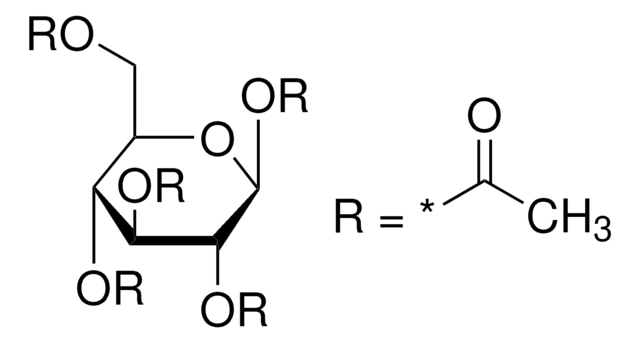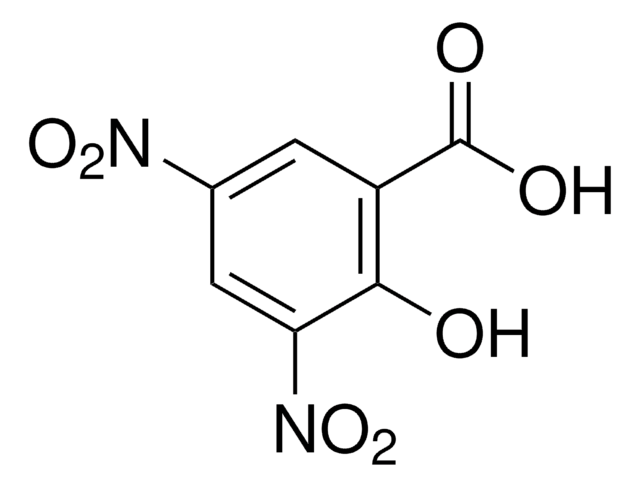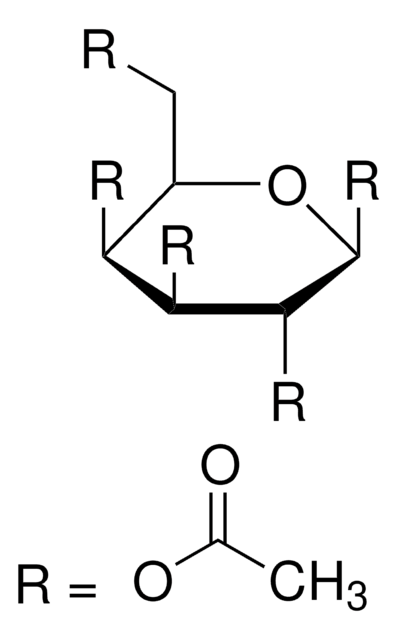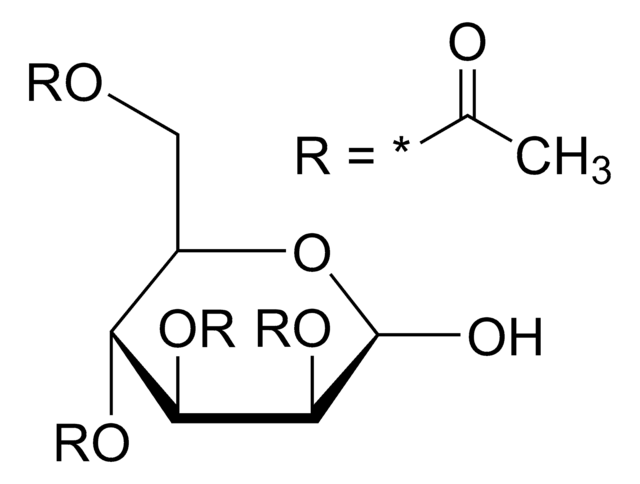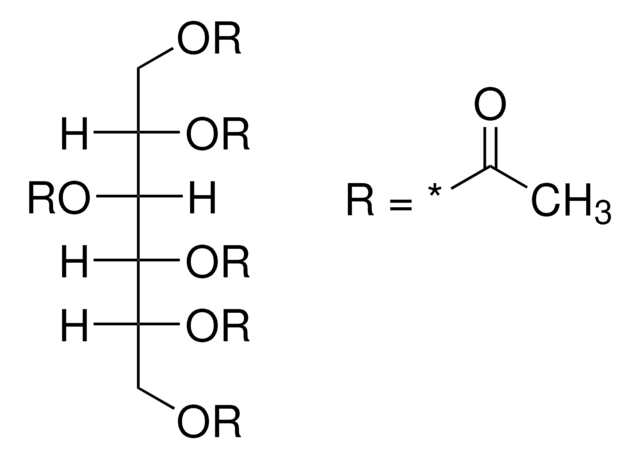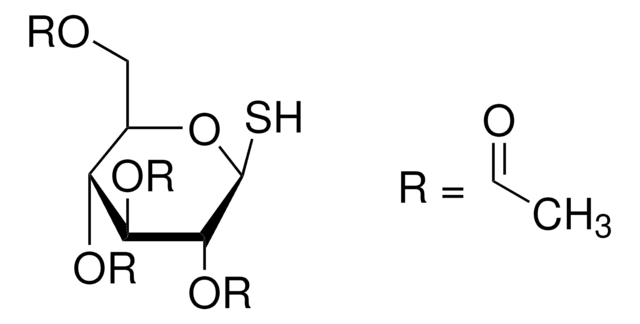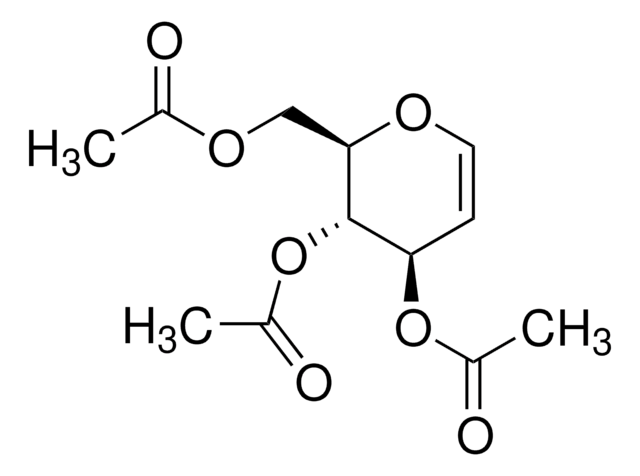G2354
α-D(+)-Glucosepentaacetat
99%
Synonym(e):
1,2,3,4,6-Penta-O-acetyl-α-D-glucopyranose
About This Item
Empfohlene Produkte
Assay
99%
Optische Aktivität
[α]20/D ≥+98°, c = 1 in ethanol
mp (Schmelzpunkt)
109-111 °C (lit.)
SMILES String
CC(=O)OC[C@H]1O[C@H](OC(C)=O)[C@H](OC(C)=O)[C@@H](OC(C)=O)[C@@H]1OC(C)=O
InChI
1S/C16H22O11/c1-7(17)22-6-12-13(23-8(2)18)14(24-9(3)19)15(25-10(4)20)16(27-12)26-11(5)21/h12-16H,6H2,1-5H3/t12-,13-,14+,15-,16+/m1/s1
InChIKey
LPTITAGPBXDDGR-LJIZCISZSA-N
Suchen Sie nach ähnlichen Produkten? Aufrufen Leitfaden zum Produktvergleich
Allgemeine Beschreibung
Anwendung
Signalwort
Warning
H-Sätze
Gefahreneinstufungen
Skin Sens. 1A
Lagerklassenschlüssel
11 - Combustible Solids
WGK
WGK 3
Flammpunkt (°F)
Not applicable
Flammpunkt (°C)
Not applicable
Persönliche Schutzausrüstung
Eyeshields, Gloves, type N95 (US)
Hier finden Sie alle aktuellen Versionen:
Besitzen Sie dieses Produkt bereits?
In der Dokumentenbibliothek finden Sie die Dokumentation zu den Produkten, die Sie kürzlich erworben haben.
Kunden haben sich ebenfalls angesehen
Unser Team von Wissenschaftlern verfügt über Erfahrung in allen Forschungsbereichen einschließlich Life Science, Materialwissenschaften, chemischer Synthese, Chromatographie, Analytik und vielen mehr..
Setzen Sie sich mit dem technischen Dienst in Verbindung.